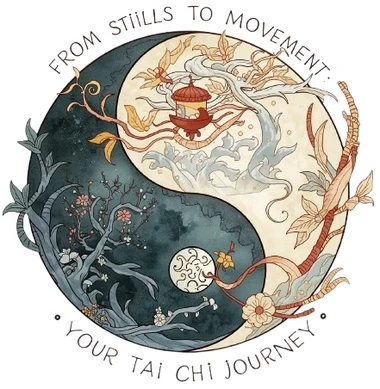In the vast and intricate world of Chinese martial arts, where the dynamic fury of Shaolin meets the internal flow of Tai Chi, there exists a lesser-known but profoundly sophisticated system: Mian Quan (绵拳) – the Cotton Fist.
Named for its soft, continuous, and pliable movements that conceal a potent internal strength, Mian Quan is a gem of China’s cultural heritage. Officially recognized in 2014 by its inclusion in the National Intangible Cultural Heritage list (Project VI-76), this art form represents a unique synthesis of self-defense, health cultivation, and philosophical depth.
This deep dive explores the world of Mian Quan, from its foundational exercises and historical roots to its technical nuances and ongoing preservation.
We will unravel the threads of this "soft" art, revealing why it is much more than just a gentle physical exercise.
The Essence of Cotton: Understanding Mian Quan
At first glance, Mian Quan appears as a series of fluid, graceful, and almost dance-like movements. Its name, "Cotton Fist," perfectly captures this external softness. However, the core principle of the art is "outside soft, inside hard" (外柔内刚).
Like a cotton boll that yields to the touch but contains a resilient seed, Mian Quan practitioners cultivate a relaxed, supple exterior to mask a powerful, rooted internal force.
The art is characterized by several key features:
- Circularity and Continuity: Movements are round, coherent, and linked together in an unbroken flow, described as "continuous and endless" (连绵不断).
- Softness Overcoming Hardness: It employs a strategy of receiving force softly, neutralizing it, and then countering with precise, powerful strikes from close range.
- Post-Emptive Strategy: A cornerstone of its combat philosophy is "striking after the opponent, subduing them later" (后发制人). Instead of meeting force with force, it specializes in yielding, absorbing, and then exploiting the opponent's momentum.
- Integration of Mind and Body: The practice demands intense mental focus, coordinating breath, intention (意), and movement into a unified whole.
Weaving the Foundation: The Core Twelve Postures
A practitioner's journey into Mian Quan begins with the Basic Twelve Postures (基础十二式), a set of fundamental exercises designed to build the unique physical structure and power generation methods of the art. These forms cultivate flexibility, stability, and the characteristic "cotton-like" energy.
For those seeking to learn, several resources exist, though their authority varies:
Official Channels: The Shanghai Yangpu District Jiangpu Community Cultural Activity Center, the official protection unit for the非遗, has hosted online "Intangible Cultural Heritage Cloud Classes." While some videos have suffered from technical issues, this remains the most authoritative source for updates and official instruction.
Online Platforms:
- Douyin (TikTok): Users like 'XinJue Mian Quan Studio' demonstrate forms such as the ancient "Pan Qiu Twelve Postures," which includes movements like "Iron Ox Plows the Field" (铁牛耕地). However, learners should be mindful of the potentially low authority of individual accounts.
- Tencent Video: A valuable resource is the "Twelve Jin Brocade"口令完整版 video, demonstrated by a practitioner certified by the Wushu Association. This offers a more reliable reference for the complete sequence and its applications.
Here is a brief overview of the foundational Twelve Postures:
Shaking Hands (Shaking the Arms) - 摇手(摇膀子): Loosens the shoulder joints and initiates the development of whipping, circular power from the core.
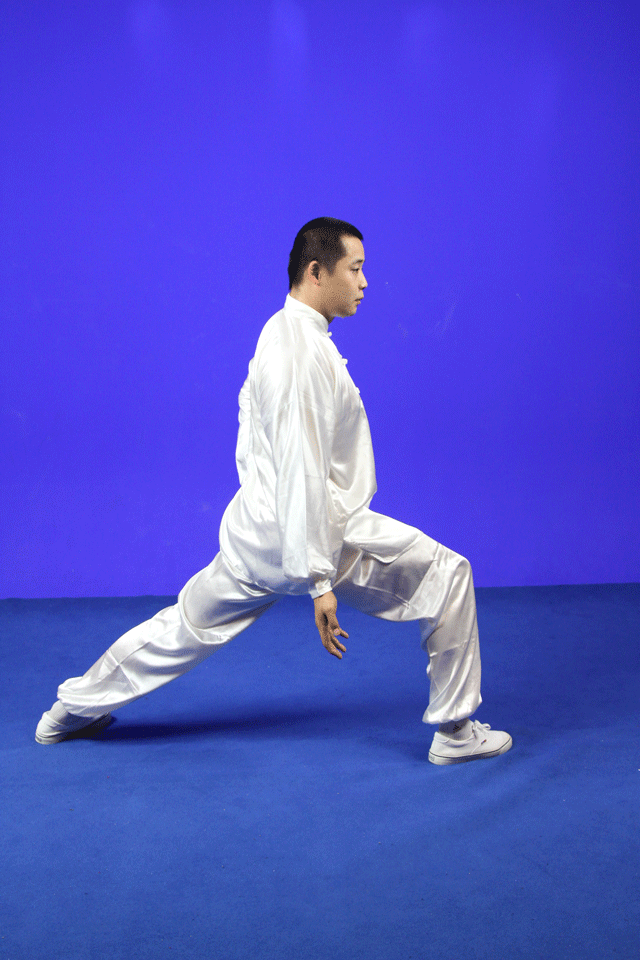
Horse Stance Thrust Punch - 马步冲拳: Builds rooted power in the horse stance, channeling force from the legs and waist into a straight punch.
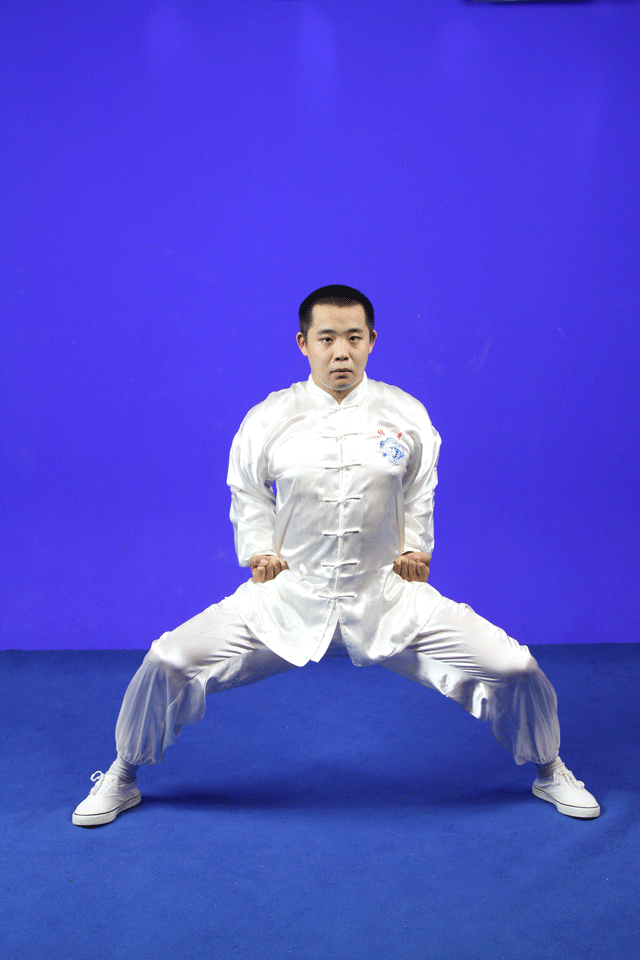
Horse Stance Double Punch - 马步双拳: Develops coordinated, explosive power from the centerline.

Horse Stance Through the Back - 马步通背: Focuses on issuing power through the back and spine, a key to internal strength.

Rubbing Shoulders - 摩肩: Enhances shoulder mobility and the ability to generate power from subtle upper-body rotations.
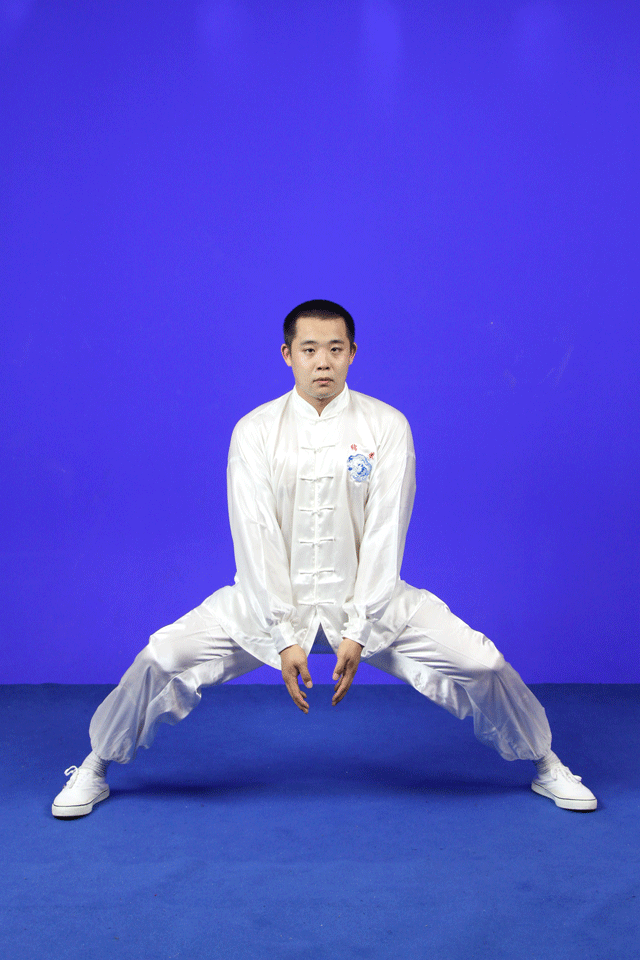
The Thousand-Pound Hammer - 千斤锤: Trains a heavy, sinking power, like a hammer dropping, building immense stability.
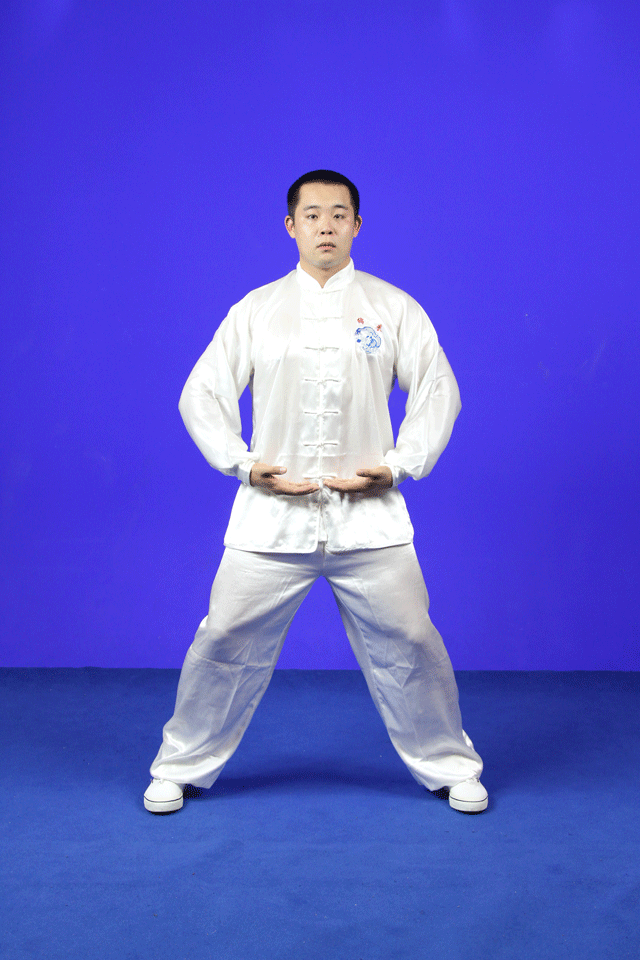
Lion Plays with the Ball - 狮子盘球: A classic exercise in coordinating the hands in circular, "ball-holding" motions, cultivating spatial awareness and soft control.
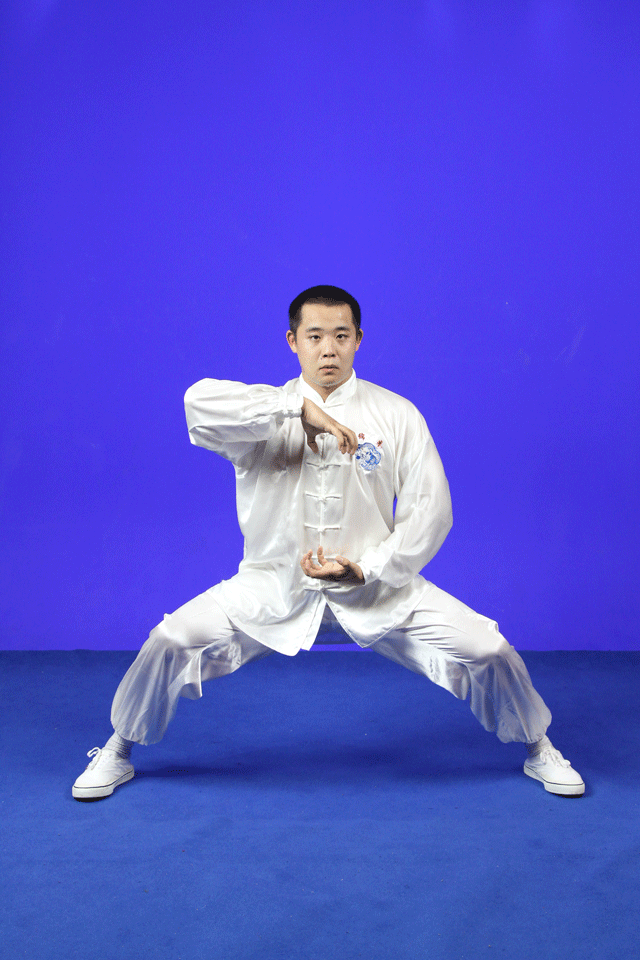
Lion Rolls the Ball - 狮子滚球式: A more dynamic version of the previous posture, teaching how to redirect and roll incoming force.
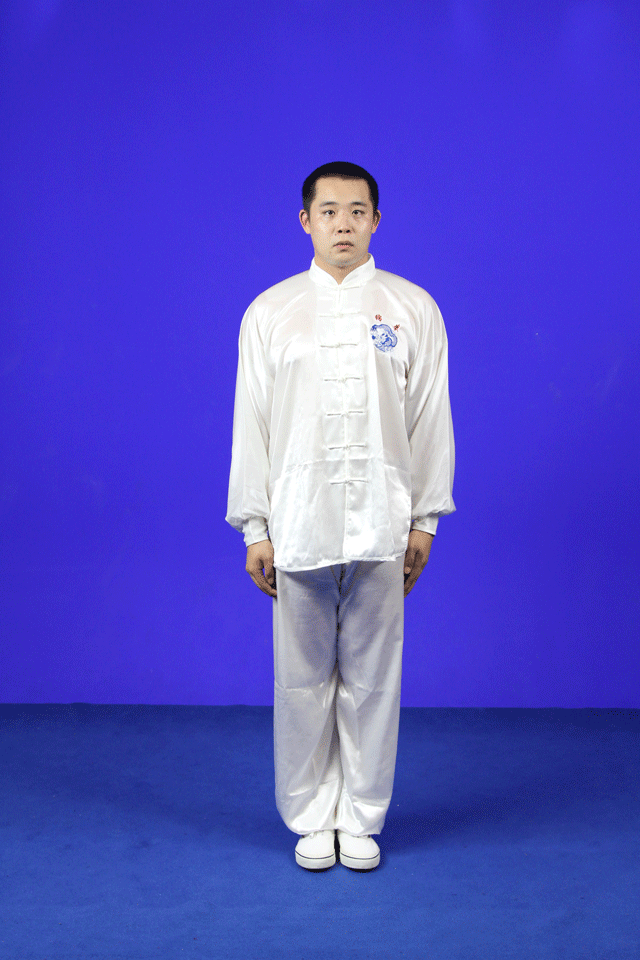
Rafting and Shaking the Bones - 撑排抖骨: A whole-body shaking and trembling exercise designed to release tension and develop explosive, short-range power (抖劲).
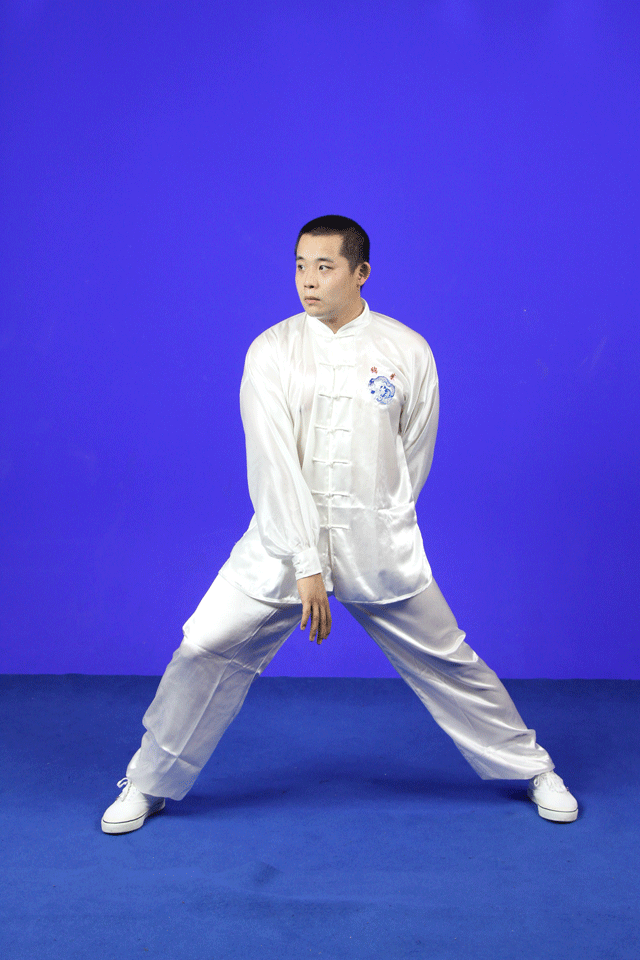
Drawing the Bow Elbow - 拉弓肘: Trains the application of the elbow in a pulling-and-striking motion, like drawing a bow.
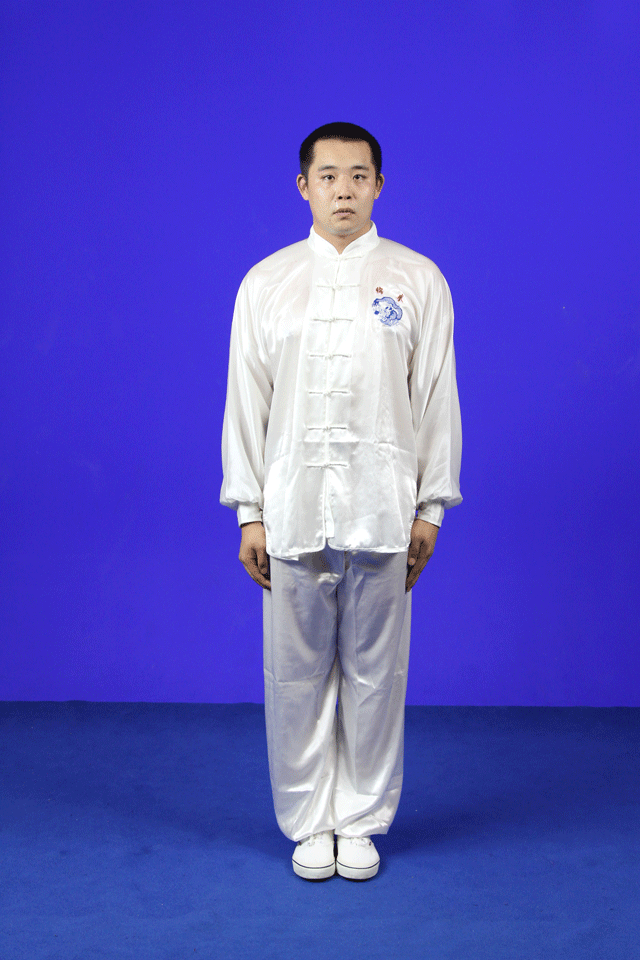
Double Elbow - 双肘: Focuses on the simultaneous use of both elbows for close-quarters combat.

Ox-Horn Elbow - 牛角肘: A powerful upward and forward elbow strike, mimicking the thrust of an ox's horn.
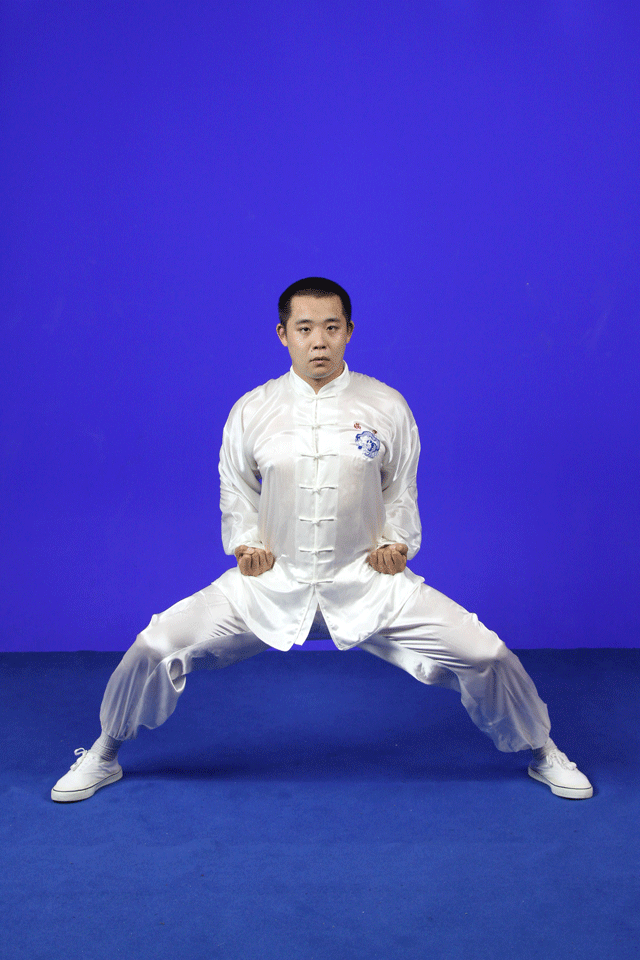
Mastery of these twelve postures provides the essential vocabulary for the more advanced practices, including the Power Training Duo Sets (功力对练十八式) and the internal energy work of Mian Qi Gong (绵气功).
Cotton vs. Supreme Ultimate: Mian Quan and Tai Chi
To the untrained eye, Mian Quan and Tai Chi Chuan (太极拳) can appear similar. Both are internal martial arts (内家拳) that emphasize softness, circularity, and the cultivation of internal energy (气, Qi).
Historically, they are even intertwined; the legendary Yang Luchan, founder of Yang-style Tai Chi, reportedly referred to his art as "Mian Quan" when he first taught in Beijing.
However, significant technical and philosophical differences exist:
| Aspect | Mian Quan (Cotton Fist) | Tai Chi Chuan (Supreme Ultimate Fist) |
|---|---|---|
| Historical Origin | Traceable to Qing Dynasty镖师 (escorts); strong association with practical, grassroots self-defense. | Often linked to Daoist traditions (e.g., Zhang Sanfeng) and a more explicit philosophical framework. |
| Combat Philosophy | "Post-emptive control" (后发制人). Specializes in close-range fighting (近身靠打), using yielding to create openings for devastating short-power strikes and clinches. | "Softness overcoming hardness" (以柔克刚). Focuses on blending with and redirecting force, often uprooting and throwing an opponent. |
| Power Generation | Employs methods like "Shaking the Arms" (摇膀) and "Rubbing Shoulders" (摩肩) to create whipping,弧形 (arc-shaped) power. | Stresses power "originating from the feet, issuing from the legs, directed by the waist" (起于足发于腿). Emphasizes whole-body connectedness (整劲). |
| Theoretical Framework | More focused on direct, practical fighting techniques and body mechanics. | Deeply integrated with Yin-Yang theory, with a complex theoretical system governing the transformation of substantial and insubstantial (虚实转换). |
In essence, while both arts are soft, Tai Chi often feels like moving water—yielding, flowing, and redirecting.
Mian Quan, by contrast, can feel more like a resilient vine—yielding initially, then coiling and striking with unexpected rigidity and power.
A Living Heritage: The History and Preservation of Mian Quan
Mian Quan's history in Shanghai is a story of migration, adaptation, and grassroots resilience.
- The Founder in Shanghai: The earliest verifiable propagator was Meng Guangyin (also known as Meng Guanyu), a镖师 (escort) from Cangzhou, Hebei—a region famous for its martial arts. In the 1920s, he brought Mian Quan to Shanghai. Legend has it that Meng learned the art from an elderly merchant after being effortlessly subdued by him, a tale highlighting the art's potent softness.
- The System Takes Root: Meng's most prominent disciple was Sun Fuhai, who dedicated eight years to mastering the system. After Meng's passing, Sun became the primary torchbearer, settling in the Lan Gui Fang area of Shanghai's Yangpu District. He famously vowed to teach primarily laborers, providing them with a means for self-defense and health improvement. It was under Sun and his successors that Mian Quan absorbed elements of Shanghai's dockworker culture, evolving into the distinct regional style we see today.
- The Path to National Recognition: For decades, Mian Quan was passed down through families and small, dedicated groups. Its recognition as a Shanghai Municipal and, ultimately, a National Intangible Cultural Heritage in 2014, was a pivotal moment. The Shanghai Yangpu District Jiangpu Community Cultural Activity Center was named its official protection unit.
- Modern Transmission: The "Shanghai Lan Gui Fang Mian Quan Martial Arts Club," led by third-generation inheritor Sun Hongxi (grandson of Sun Fuhai), is at the forefront of its preservation.
Their efforts include:
- Establishing school programs in institutions like Shanghai Kunming School and Qiqihaer Road First Primary School Branch.
- Participating in national and international competitions to raise the art's profile.
- Leveraging digital platforms by uploading instructional videos, ensuring the art reaches a global audience.
Conclusion: The Unbroken Thread
Mian Quan is more than a collection of techniques; it is a living narrative of Chinese history, a testament to the ingenuity of its working-class practitioners, and a profound exploration of the martial principle that the soft can indeed conquer the hard.
In a world that often values brute force, the Cotton Fist offers a sophisticated alternative—a path of intelligence, resilience, and internal power.
As it navigates the modern world through school programs and online classrooms, this centuries-old art demonstrates remarkable vitality.
It reminds us that true strength is not always loud and forceful; sometimes, it is quiet, continuous, and deceptively soft, woven into movements that are as beautiful as they are effective.
For those willing to delve beyond the surface, Mian Quan offers not just a system of self-defense, but a moving meditation on the very nature of power itself.
Frequently Asked Questions About Mian Quan (Cotton Fist)
What is Mian Quan (Cotton Fist)?
Mian Quan, or Cotton Fist, is a traditional Chinese martial art recognized in 2014 as a National Intangible Cultural Heritage of China (Project VI-76). It features circular, continuous movements that appear soft externally but contain internal power, emphasizing the principle of "external softness, internal hardness" and post-emptive control in combat.
How is Mian Quan different from Tai Chi?
While both are internal martial arts, key differences include:
- Combat Philosophy: Mian Quan specializes in "post-emptive control" and close-range striking, while Tai Chi focuses on "softness overcoming hardness" and energy redirection
- Power Generation: Mian Quan uses "shoulder shaking" and "shoulder rubbing" for whipping power, while Tai Chi emphasizes whole-body connected power from the feet up
- Theoretical Framework: Tai Chi incorporates Yin-Yang philosophy extensively, while Mian Quan prioritizes practical fighting applications
Where can I learn Mian Quan?
Primary learning resources include:
- Official Channels: Shanghai Yangpu District Jiangpu Community Cultural Activity Center (official protection unit)
- Training Institutions: Shanghai Lan Gui Fang Mian Quan Martial Arts Club
- School Programs: Heritage bases in Shanghai Kunming School and Qiqihaer Road First Primary School Branch
- Online Resources: Intangible Cultural Heritage cloud classes and certified instructional videos on platforms like Tencent Video
What are the core training methods of Mian Quan?
The Mian Quan system includes three main components:
- 12 Basic Forms: Foundational exercises including Shaking Hands, Horse Stance Thrust Punch, Rubbing Shoulders, and Lion Plays with Ball
- 18 Power Training Duo Sets: Partner exercises for combat application and power development
- Mian Qi Gong: Internal energy cultivation including bone-loosening and energy circulation exercises
What is the historical background of Mian Quan?
Mian Quan traces back to the Qing Dynasty and was brought to Shanghai around 1920 by Meng Guangyin, a镖师 (escort) from Cangzhou, Hebei. His disciple Sun Fuhai developed it further in Shanghai's Yangpu District, blending Cangzhou martial arts with Shanghai's dockworker culture to create the distinctive Shanghai style of Mian Quan. The art has been passed down through four generations of practitioners.
What are the key technical characteristics of Mian Quan?
Main technical features include:
- External softness with internal hardness
- Close-range striking with post-emptive strategy
- Stable lower body with power generated from the waist
- Natural breathing with controlled release
- Integrated internal and external training
- Circular, continuous movements that flow without interruption
Who are the current inheritors of Mian Quan?
The contemporary representative inheritor is Sun Hongxi (third generation), grandson of grandmaster Sun Fuhai. Recognized in 2018 as the national intangible cultural heritage inheritor for Mian Quan, he currently serves as chairman of Shanghai Lan Gui Fang Mian Quan Martial Arts Club and dedicates himself to preserving and promoting this art through school programs, competitions, and digital content.
